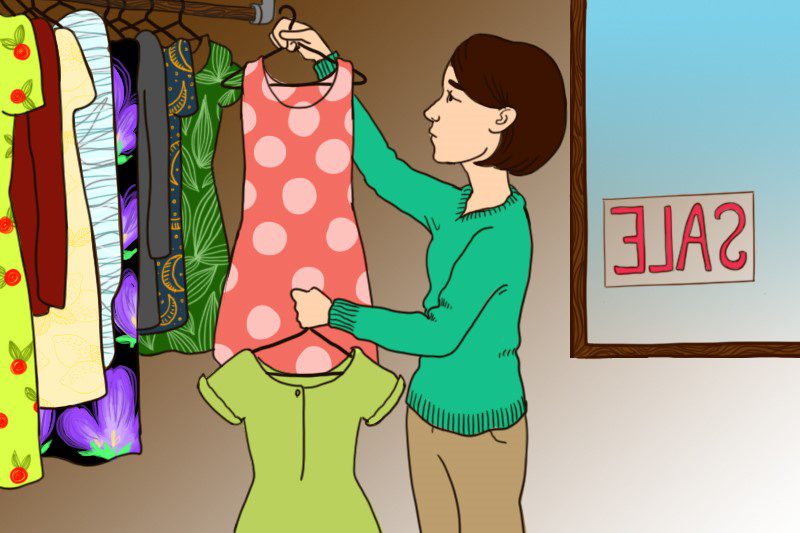How To Be A More Conscious Consumer Without Breaking The Bank
In today’s world, it seems like we want things faster and cheaper. While that can feel good as a consumer, there’s a hidden cost you may not be considering. When items are below market rate, items could be made under poor conditions, be potentially harmful to the environment or be of questionable quality. If you want to be a more conscious consumer, here’s how.
1. Look At Mission, Vision, And Values
When we spend money, we are voting with our dollars whether we are doing so intentionally or not. Our money is supporting a company, so if you want to be a conscious consumer think of the types of companies you want to support. Do you want a company that is fair to its workers? That hires a lot of women? You want to look at a company’s mission, vision, and values.
So to be a conscious consumer, write down what is important to you when purchasing something. Everyone will have different answers, so be true to yourself and what you want.
Before purchasing something, you can research the brand. Do they have a stated mission? Do they give back in any way? Do they have women or people of color on their staff? Google the company in question and see if they’re embroiled in any scandals or things that you wouldn’t agree with.
2. Know Where Your Items Are Made
If you want to support local or hyper-local, you’ll want to purchase items made in America or made in your city. For example, when I lived in Portland, I loved buying coffee from local coffee shops that worked with farms supporting workers in other countries.
Part of being a conscious consumer is knowing the impact of where your items are made. Many of us buy things and don’t think about the greater impact. Imagine your dollar traveling far and wide and what impact it may have. Buying local can keep money in your community and may do more good.
If you’re concerned about work conditions, it’s important to see where items are made. Many items are made in China, but those products may not have been made under the best circumstances.
An article by CNBC showcased “nightmare” work conditions in several big-name factories. Doing your research about companies and where things are made can help you make a more conscious decision.
3. Buy Second Hand
One way to minimize your environmental impact and footprint is to buy second hand. There are plenty of clothes in existence or appliances that are gently used or still functional that you can buy. It’s not necessary to buy everything new every time you need to buy something.
Consider shopping at thrift stores where you can buy things secondhand and for a fraction of the cost. In this way, you’re helping both the environment and your budget.
4. Support Certified B-Corporations
Many companies can say they are ethical or doing good, without having any outside entity verifying that fact. However, there are certified B-corporations that are actually trying to do good in the world and are verified.
According to the B-corp website:
“Certified B Corporations are businesses that meet the highest standards of verified social and environmental performance, public transparency, and legal accountability to balance profit and purpose. B Corps are accelerating a global culture shift to redefine success in business and build a more inclusive and sustainable economy.”
These certified companies want to do good in the world and consider people, place, and practices and ensure they’re serving future generations.
5. Shop Based On What’s Important To You
After writing down what is important to you, you want to put your money where your mouth is and support companies with your dollars. Next time you need to buy something, consider going to DoneGood.co to shop brands that are aligned with your values. For example, you can find brands that empower workers, are eco-friendly, are cruelty-free or made in the USA and more.
The site even has sections that show “alternatives to H and M” or “alternatives to Bed Bath and Beyond” so you can see their Done Good counterpart.
A Word On Being A Conscious Consumer…
Becoming a conscious consumer all starts with being more aware of where your money is going when you buy something. It’s about using your money as a powerful tool to support companies that align with your values. Unfortunately, many “conscious” brands are more expensive. That’s because they have to be because they’re using better quality materials, not exploiting workers, etc. So it’s important to adjust to the higher price but realize that your items will probably last a lot longer as well and you know your money is doing good. If budget is prohibitive, committing to buying second hand whenever possible is a great start. Being a conscious consumer can make you more mindful and put your money to work in the world, the way you want it.
Melanie Lockert is a personal finance expert, the blogger behind DearDebt.com and author of the book “Dear Debt: A story about breaking up with debt.” Melanie paid off $81,000 of debt and is now on a mission to help others do the same. Feature Illustration: Laura Caseley For The Money Manual






